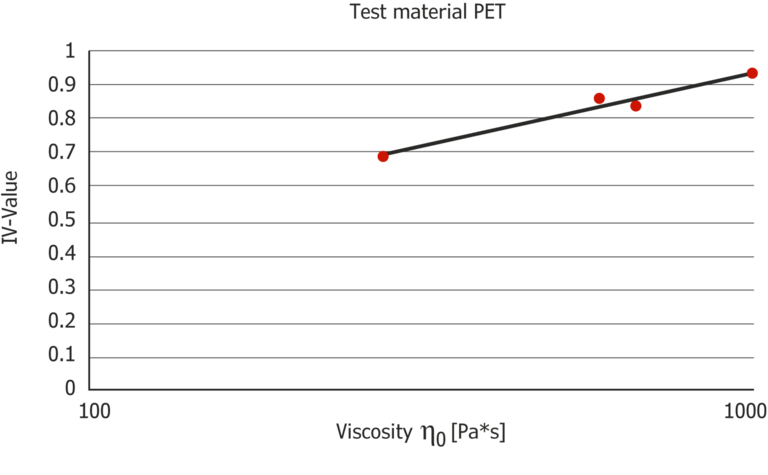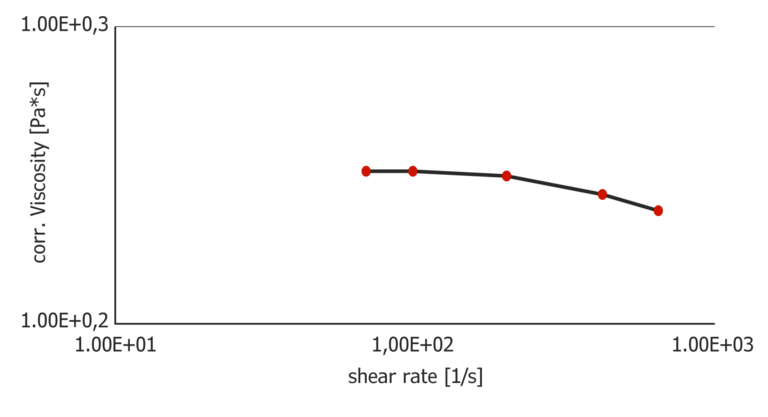The measurement of the intrinsic viscosity (IV value), also called intrinsic viscosity or Staudinger index, is time-consuming by dissolving the polymers. The solvents and acids used in this process are harmful to the environment. The method can only be carried out in suitably equipped laboratories. The method characterizes the average molecular weight of the polymers.
The average molecular weight of the polymers is also very well characterized by the shear viscosity. The melt viscosity correlates with the IV value and is therefore suitable as an alternative to the IV value determination.
 Correlation between melt viscosity and intrinsic viscosity (IV value)
Correlation between melt viscosity and intrinsic viscosity (IV value)
The method of measuring melt viscosity by using a capillary rheometer is simple and avoids the environmentally hazardous solvents, but requires drying in the case of moisture-sensitive materials such as PET, PC or PA.
The drying process can be carried out in a time-consuming vacuum oven or by a factor of 4-8 faster in a moisture analyzer. As an alternative to drying in the oven, the Hydro Tracer from Aboni is suitable, in which the sample is dried over calcium hydride during the measurement. The process takes about 0.5-2 hours, depending on the moisture content. The moisture content of the material must be below a residual moisture of 0.03% so that the influence of moisture is negligible.
The measurement of shear viscosity can be carried out for the IV value determination with only one long capillary (30/1mm length/diameter). For moisture-sensitive materials, a test channel with a diameter of 9.5mm is best suited due to the small sample quantity required and the faster material heating. The melting time here is only 5 minutes and is thus only half as long as for an equally suitable test channel with a diameter of 15mm. In order to determine the zero viscosity required for the determination of the IV value, a flow curve is measured which reaches as far as possible to the plateau of the viscosity curve. The following diagram shows such a flow curve using PET as an example.
 Flow curve for PET: here, the viscosity was determined in the shear rate range of 70-600 1/s.
Flow curve for PET: here, the viscosity was determined in the shear rate range of 70-600 1/s.
Using a function to measure the IV value, the zero viscosity is first calculated in one step using a model function such as the Carreau model, and then the IV value is calculated using coefficients determined once. The process is shown schematically in the following figure. Depending on the residual moisture, the IV value is determined after 1-2.5 hours.
 Determination of the IV value with the capillary rheometer – PET material
Determination of the IV value with the capillary rheometer – PET material
Send us an e-mail info@goettfert.de or call us +49 (0) 62 81 408 - 0
We will help you with pleasure.